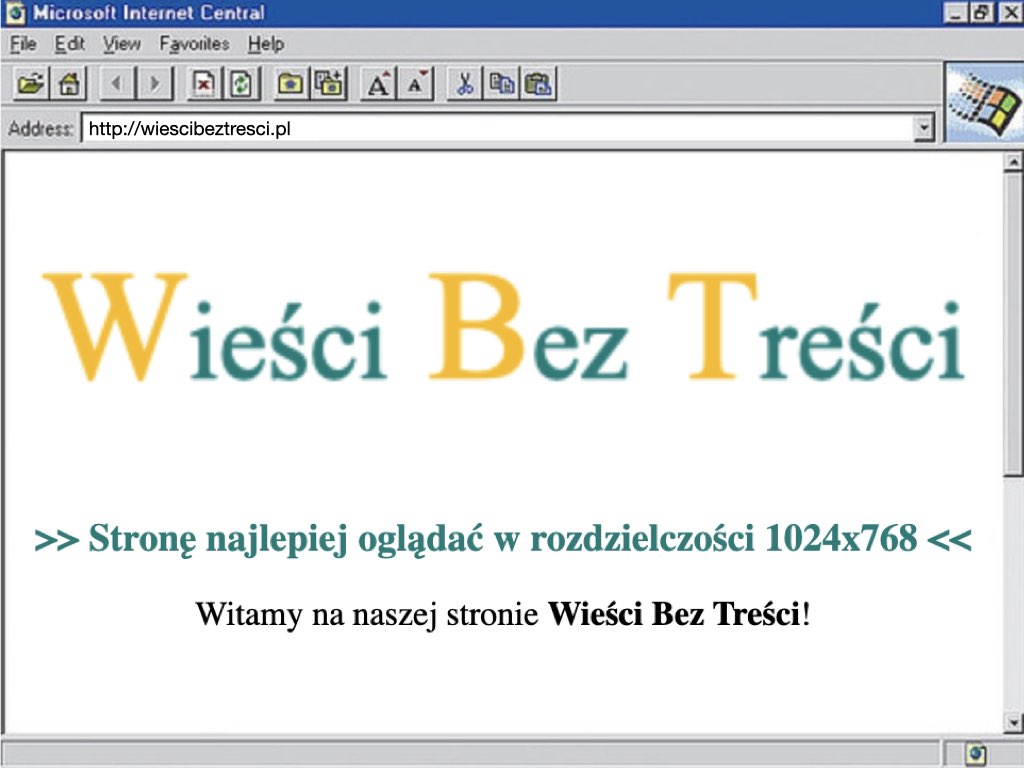Wieści bez treści
PL
Świat wciąż zmaga się z pandemią koronawirusa. Izolacja wpływa na nasze postrzeganie świata, jeszcze częściej niż dawniej sięgamy po doznania multimedialne i internet. Wieści Bez Treści to projekt całkowicie wirtualny, oparty o stronę internetową i zorientowany wokół jednej myśli przewodniej – nie wszystko, co czytamy w internecie jest prawdą. Nawiązując do lat 90, w których internet powstawał jako źródło rzetelnej wiedzy, Piotr Paweł Adamczyk przedstawia problem fałszywych informacji w sposób karykaturalny i hiperboliczny. Stworzył portal, dzięki któremu nie dowiesz się nic, ale wiele zrozumiesz. Spotkasz tam ludzi, lecz nikogo nie poznasz. Przeczytasz wieści, tylko bez treści.
Za generowanie tekstu odpowiada algorytm oparty o łańcuch Markowa (podobny do tych, które wykorzystuje się w smartfonach do podpowiadania wyrazów w czasie pisania wiadomości), następnie tekst przechodzi przez weryfikację antyplagiatową oraz filtr gramatyki i składni oparty o bibliotekę DeepL. Algorytm działa w pełni niezależnie od twórcy, a jedynym źródłem treści są lektury szkolne z portalu wolnelektury.pl w różnej konfiguracji, co nadaje każdemu tekstowi niepowtarzalny charakter. Ilustracje dobierane są na podstawie treści artykułów i pobierane z bazy Creative Commons, zaś komentarze powstają w podobny sposób do artykułów – zawsze próbują nawiązywać do powiązanego tekstu.
EN
The world is still struggling with the coronavirus pandemic. Isolation has affected our perception of the world. We turnto multimedia and internet experience more often than we used to. Wieści Bez Treści (literally “news without content”) is anentirely virtual projectcreated in the form of a website and around theidea that not everything we read on the internet is true. By referring to90s which saw the emergence of the internet as a reliable source of knowledge, Piotr Paweł Adamczyk addresses the issue of fake newsin a caricatural and hyperbolic way. He created a website where you can learn nothing but understand a lot, encounter people butmeet no oneandread headless headlines.
The text is generated by an algorithm based on Markov chains (similar to those used in smartphones to suggest words while writing a message), then the text goes through anti-plagiarism verification and a grammar and syntax filter based on the DeepL library. The algorithm works fully independently of the author, and the only source of content are school readings from the wolnelektury.pl portal in various configurations, which gives each text a unique character. The illustrations are selected on the basis of the content of the articles and downloaded from the Creative Commons database, while the comments are created in a similar way to the articles – they always try to refer to the related text.
kliknij w obrazek aby przejść na stronę | click on the image to go to the website
